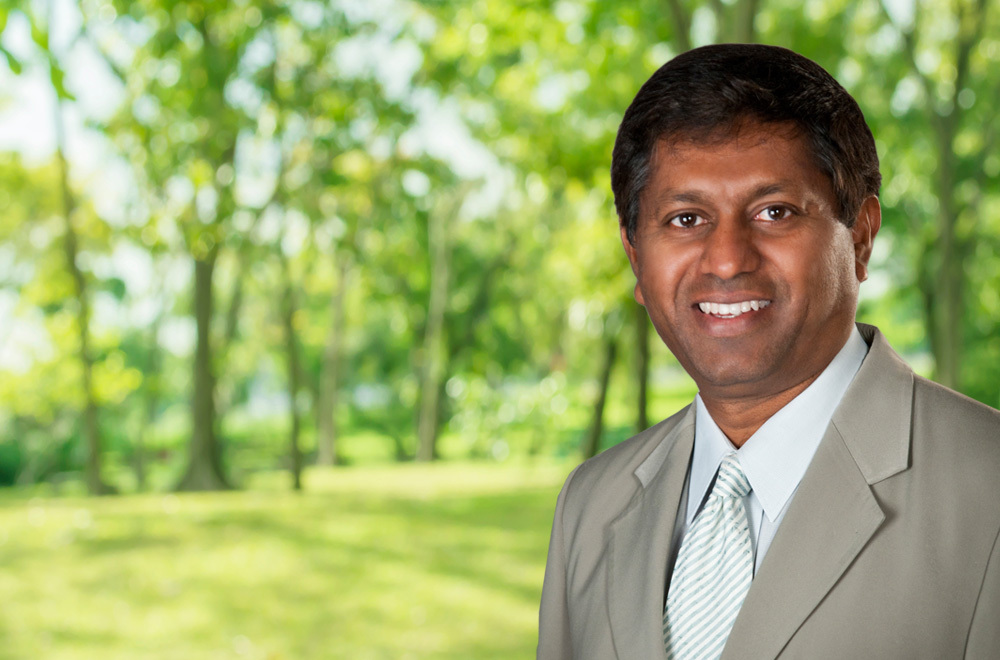For over 32 years, Sam Irrinki has provided wastewater collection and treatment services from Maine to California, lending his optimization expertise for some of the largest wastewater treatment facilities in the country. He has worked on multiple projects that have won Excellence Awards from the American Council of Engineering Companies (ACEC). Sam is a registered Professional Engineer and a member of the Water Environment Federation (WEF) and American Water Works Association. He has authored many chapters in WEF Manual of Practice, No. 11, and received the WEF award for Environmental Excellence.
What are our clients’ biggest challenges in addressing wastewater infrastructure?
Outside of underfunding for infrastructure improvements, our clients’ challenges are threefold: conveyance, treatment, and disposal of wastewater. Regarding conveyance, replacement of corroded pipes and other sewer conveyance structures has become integral to infrastructure resilience. We can no longer adhere to the old adage “out-of-sight, out-of-mind.” Our economy (utility rates and development fees) and public health and safety largely rely on an agile approach in assessing and addressing aging infrastructure.
As for treatment, municipal wastewater treatment facilities are struggling to reduce phosphorus and nitrogen nutrient concentrations below increasingly stringent limits. We are working with a client in Roberts, Wisconsin to install a first-of-its kind nutrient recovery system for long-term, full-scale operation. This system relies on algae to consume excess nutrients and releases oxygen into the water.
In addition to these strict limits for phosphorus and nitrogen, the ever-changing regulatory environment for PFAS presents a challenge to our clients. PFAS consolidates in our wastewater treatment plants after use, whether from firefighting foams or other PFAS-containing industry products. With Weston at the forefront, local agencies and environmental companies are working to develop remediation technologies to meet state-level enforceable standards.
Finally, wastewater reuse as opposed to disposal can alleviate water scarcity from rapid urbanization, providing a sustainable source of fresh water, and can mitigate plants’ greenhouse gas emissions. In Texas alone, yearly influxes of approximately 50,000 people are causing a major strain on drinking water supplies. To combat this strain, several utilities promote conservation and implement reuse to sustain the potable water supply.
What innovative technologies are you seeing in the industry?
Weston is leading the industry with innovative technologies that successfully confront the biggest wastewater challenges. As part of our Roberts, Wisconsin project, we pioneered implementation of the advanced biological nutrient recovery system, wherein algae reduce nitrogen and phosphorus to extremely low limits. This system produces reuse-quality water and recovers nutrients into a biomass that generates market value for the surrounding community. Moreover, we have employed advanced treatment technologies including granular activated carbon, ion exchange resins, and reverse osmosis membranes. All have been shown to effectively remove PFAS from wastewater, preventing PFAS-laden sewage from discharging into our rivers and lakes.
How can utilities support their communities to become more resilient?
Wastewater treatment plants depend on functional grid operations; providing redundant (back up) power supplies will protect the grid from disruptions or failures and enhance the resilience of our plants. With the growing electricity demand and climate-related events, power redundancy is needed now more than ever. Weston fulfilled this need during Hurricanes Harvey and Sandy by working with federal agencies to provide redundant power supplies. Likewise, water and wastewater utilities can reinforce walls and other protections that can withstand flood-related forces and control leakage or infiltration. Demonstrative of proper flood prevention and risk management, Weston upgraded a large stormwater pump station in New Orleans capable of mitigating heavy rainfall or flooding. Extreme precipitation produces sewer overflow, which overwhelms treatment plants and collection systems. Sewer separation or separating combined systems into distinct sewers for wastewater and stormwater, reduces or eliminates untreated wastewater from discharging into receiving water bodies. Currently, Weston is supporting the fourth largest city in the country (Houston, TX) with piloting different technologies to treat sewer overflows during major storm events.
How has population growth in states like Texas impacted states’ wastewater infrastructure?
Population growth and urban sprawl have had a major impact on wastewater infrastructure, from capacity strain to increased retention time of wastewater to greater concern for corrosion and odor. Utilities are building new treatment plants and pipes to meet the strenuous demand of these changes. Weston has assisted utilities with fortifying treatment plants and is working with communities such as Spicewood Beach, Texas to expand their water supply and treatment plant to provide adequate drinking water during a severe drought.
Projects:

